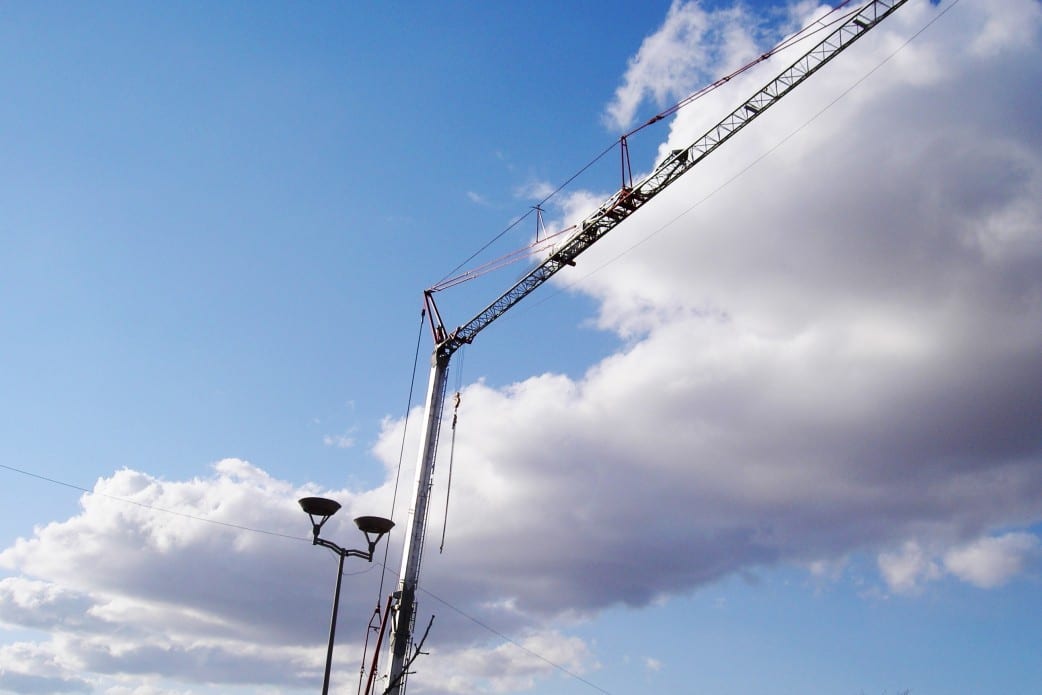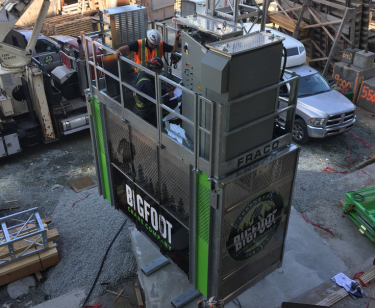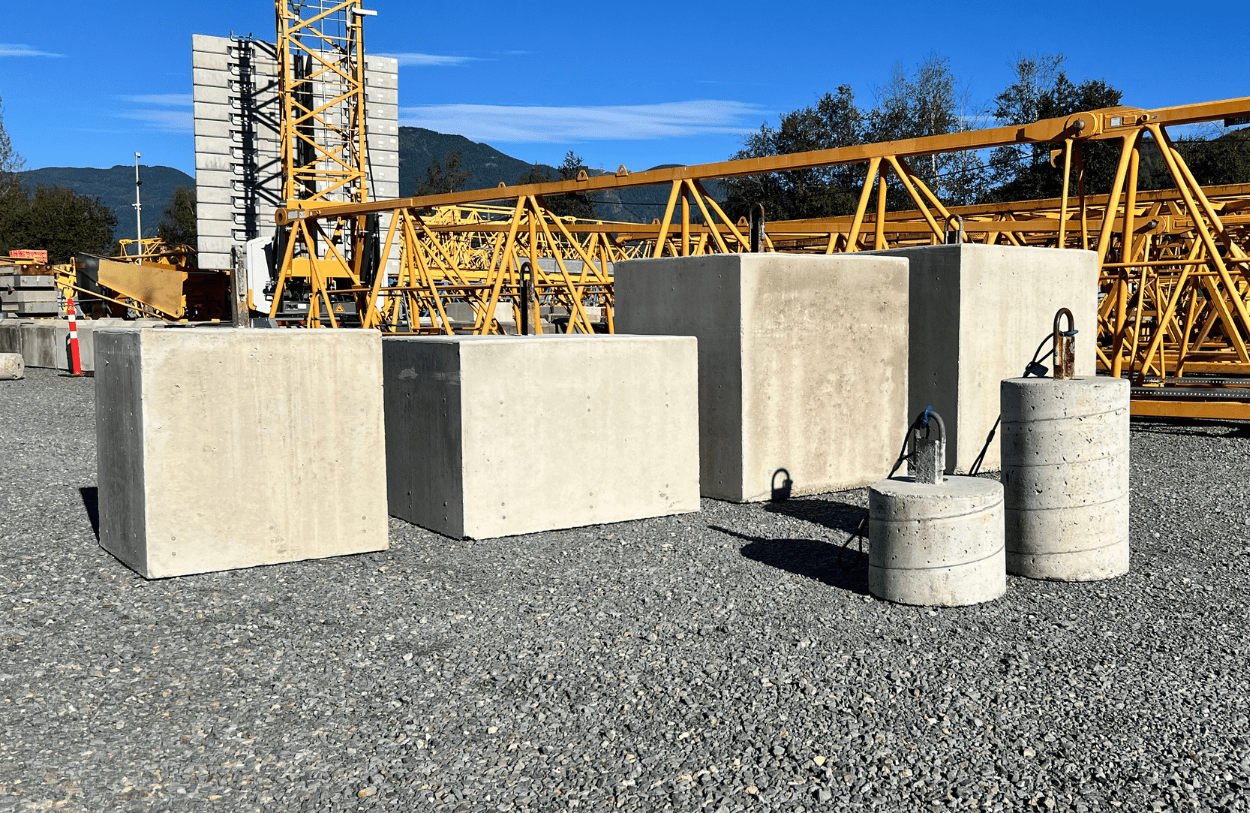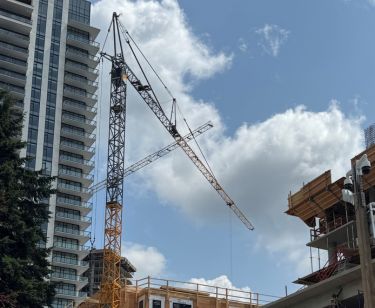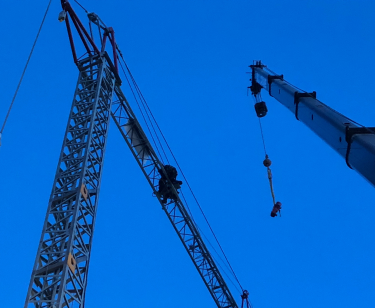Westridge Construction of Regina, Saskatchewan (westridge.ca) faced an interesting challenge.
They were under contract to build a $12 million, three-story office complex. Each floor was 20,000 square feet and there was a partial basement of 9,500 square feet. The project was to be a cast-in-place concrete structure with three staircase shafts and one elevator shaft. But those details were not what made this project challenging—it was the fact that the project site was so tight, with no access to the west or south side of the structure and very limited access to the east and north sides.
In fact, to say that the construction site was tight would be a significant understatement. Operating space was at a premium. Because of that, Westridge was in fact planning to use an off-site materials staging area, which seemed absolutely necessary, even though acquiring the yard and planning for extra materials transport would add significant cost to the project.
However, there was another solution, one that could improve site logistics and eliminate the need for an off-site yard (and its related costs). Really? What solution could possibly increase efficiency and decrease costs at the same time?
The answer? A San Marco SMH 420 Self-Erecting Tower Crane.
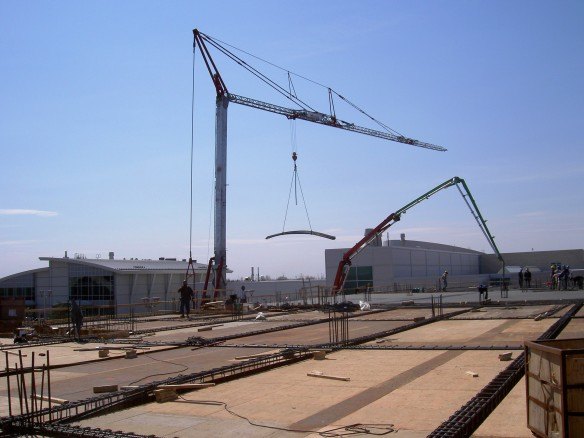
In fact, the San Marco SMH 420 cut production time on this project by 45%.
(At the time, the tower crane was supplied by Eagle West Crane and Rigging. Since then, Eagle West’s entire fleet of tower cranes was acquired by Bigfoot Crane Company.)
The San Marco SMH 420 hydraulic self-erecting crane was definitely the right tool for the job. It has a hook service height elevation of 77′ and a jib length of 136′ 9″ providing a total service range of up to 273′ 6″. The crane has a maximum lifting capacity of 8,820 lbs and can lift 2,205 lbs at its jib tip.
More importantly, this crane did not require any concrete footings or foundations and has a foot print of just 14′ 9″ X 14′ 9″. Amazingly, the SMH 420 can operate inside just 324 square feet of yard space! Another key value of this crane is that it is possible to set up quickly, between four to eight hours after the components are delivered to the site.
Before the San Marco arrived on site, Westridge was adding floors using telescopic forklifts and manual labor. But when the crane arrived and was installed, Westridge was constructing floors in half the time, since all of the columns could be set and poured with the crane, while all of the slabs and shafts were poured with a concrete pump.
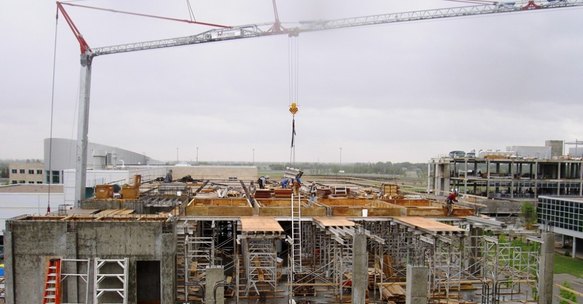
The crane saved on production time as all the columns could now be set and poured with the crane while all slabs and shafts were poured with a concrete pump.
According to Dave Labbie, the Project Superintendant, the use of the self erecting crane was able to increase the on-site service area by at least 50% while on-site production increased at a minimum of 45%.
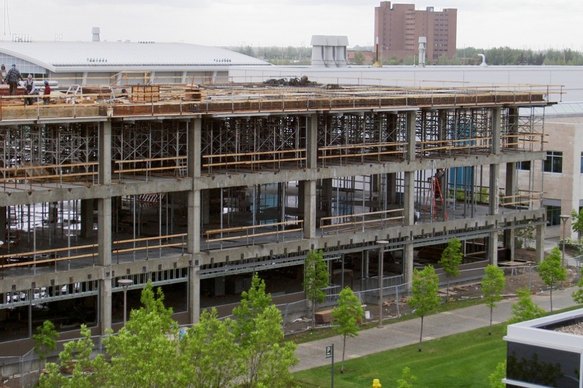
According to Dave Labbie, the Project Superintendent, the use of the self-erecting crane increased the on-site service area by at least 50% while on-site production increased at a minimum of 45%.
Labbie further commented: “The Rod-Buster is very happy, all his materials are placed exactly where he wants them, manual labor is significantly reduced, with a big increase in productivity, a double win. He told me that he wishes there was a crane like this on every job in town.”
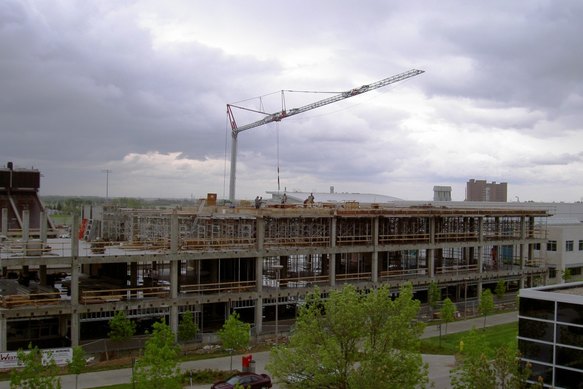
Additional factors that Site Superintendent Labbie commented on:
Increased Safety
- The material handling safety factor at the site was much improved and brought a higher safety factor to the entire project site
- Increased accuracy of material placement, ensured materials were placed exactly where the tradesmen wanted them with less exposure to all material handling risks
- Significant reductions in manual labor meant less on-site congestion and less risk to less people overall
Site Management
- The SMH 420 provided a single unloading zone on-site for all incoming materials serviced by our crane, which eliminated the need for an off-site staging yard
- Materials were easily redistributed with our crane, and placed exactly where crews needed them on the construction site
- Job site space was effectively doubled
Labbie concluded: “This crane is one of the best values we have ever spent money on. In terms of return on investment, it will be paid off in two projects. We are very happy with our purchase.”
